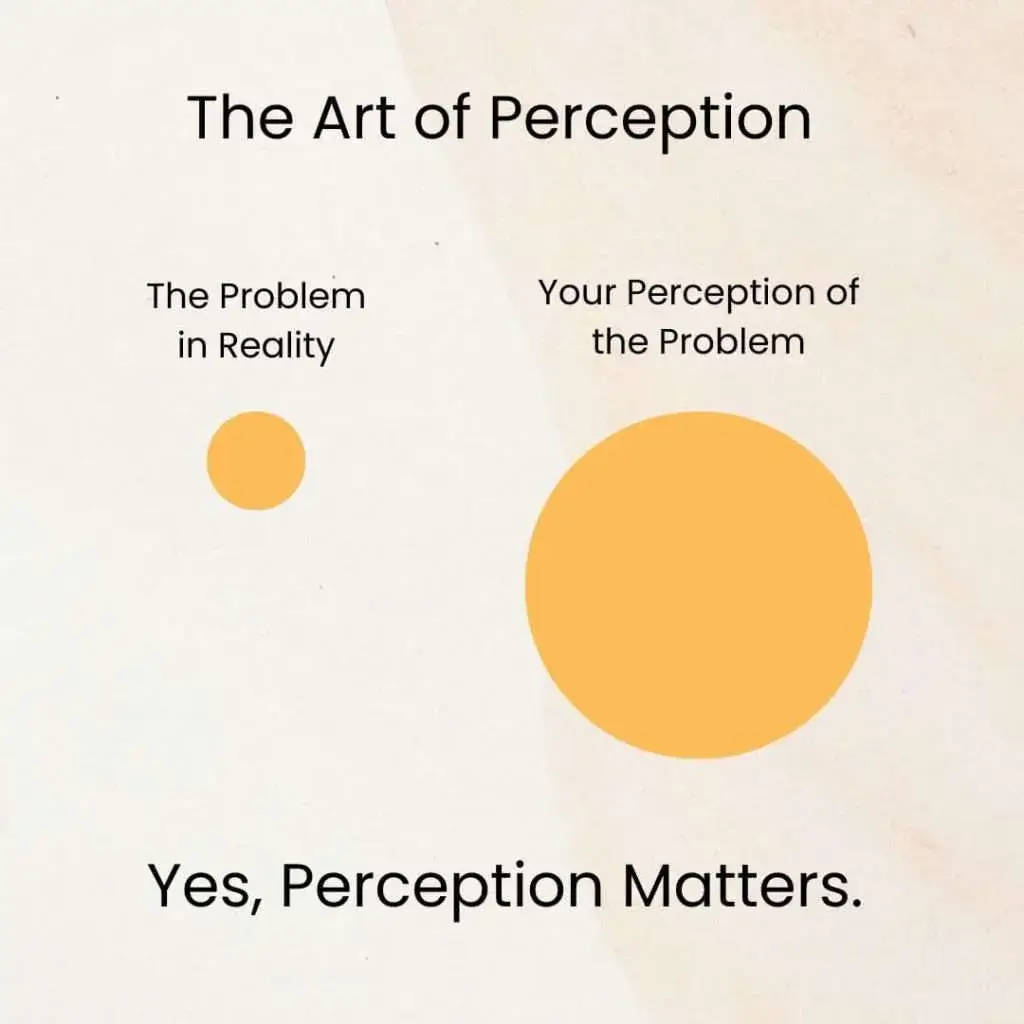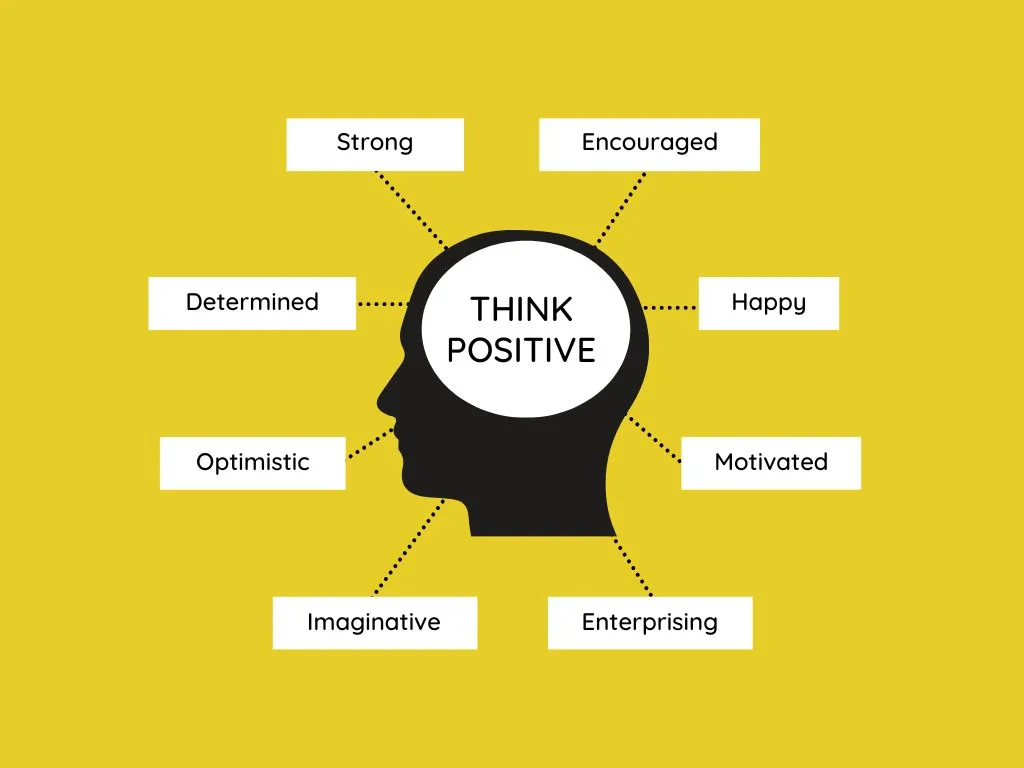
Table of Contents
We will review and evaluate some of the myths and misconceptions of perception versus reality in the workplace. We will explore how you can create a positive perception and how to avoid negative perceptions in a work situation and determine if your work persona (perception) is a stepping stone to success in the organization compared to who you are, your true self(reality).
In this review of perception versus reality, there is a point of view that perception is reality, how someone is perceived is who they are. The truth, however, is that many times employee perception versus who they are is not always the same. So where does reality come in? What happens when reality trumps perception?
Perception in the Workplace: What is Perception
Perception is the process of interpreting sensory information and creating a representation of the world around us. It is an important part of the human experience. It’s the way we see, hear, feel, taste, and smell things around us. Our perceptions are constantly changing depending on our mood and what we are doing.
For instance, if you were in a dark room with a flashlight, you would see everything differently than if you were in a brightly lit room with no light at all. Perception is how we gather, organize, and interpret information. It is a complex process that involves our senses, our thoughts, and emotions, and how we relate to what we perceive.
What is Reality
Today there are many versions of how best to describe reality, but the norm seems to point to the fact that how we experience the world is our reality. It is a difficult concept to define because there are varying views on what it means and how it should be understood.
However, reality is a fact, it is what exists, rather than what we conceived or imagined. Reality encompasses everything that exists, everything we can experience and pay attention to.
It includes the past, present, future, and everything in between. Reality can also be called objective reality because it’s what everyone agrees on. This type of reality is independent of individual beliefs or opinions, and it doesn’t change according to circumstances or personal feelings.
In the corridors of philosophy, reality is what it is – real, irrespective of our thoughts or ideas about it. It can be a subjective term based on one’s understanding of things.
What is Perception Versus Reality Anyway?
Perception is one’s understanding of reality. It is how one sees the world. Perception can be influenced by many factors including cultural background, personal experiences, and sensory input. Reality is the state of things as they exist. It’s based on facts.
We all have different perceptions of reality, and this can lead to misunderstandings between people, especially in the workplace. The only way to find out what is reality is to look at the facts and not just our perception of it.
Scenario
A scenario to demonstrate the importance of discerning perception versus reality in the workplace is as follows:
Joe is a qualified CPA working for a Fortune 500 company in the media industry. He was hired as an accountant on the product development team reporting to the Vice President of Finance.
As expected, he is a numbers man, crunching numbers for the team on the costs and pricing of new products. He does not have a creative bone in his body for advertising and marketing products.
One day he was invited to attend a meeting by an executive from the C-suite with the team of one of the company’s biggest media vendors. During the meeting, Joe realized it centered on advertising and marketing, redoing the company logo, positioning new products, etc.
He answered a few questions on pricing but that was it. At the end of the meeting, the executive identified Joe as the top man on the product development team and that the vendor should contact him for ideas and with any questions on the new advertising and marketing plan.
Joe was bewildered, he had done some advertising and marketing courses back in the day, but this was not his area of expertise. There were others on the product development team who were experts in this field and would be great points of contact for the vendor.
As he strolled back to his office, he pondered on why the executive would give the vendor the perception that he was the best point of contact for this project, when his skillset did not match the requirements for the project. He decided he would have a chat with the executive later that day.
This scenario is a good example of what occurs in the workplace based on one’s perception versus reality. Surely, the executive would have known that Joe is an accountant and not a media guy. What perception did Joe create that the executive would select him as the point of contact and overlook everyone else?
How to Create a Positive Perception in the Workplace
The workplace is where we spend much of our time. A positive perception of you by your peers will influence your productivity and self-esteem.
A positive perception in the workplace can be achieved by:
- Creating a good first impression
- Professionalism.
- Showing appreciation.
- Displaying empathy.
- Offering support.
- Being open to feedback and criticism.
- Adjusting to your company’s culture.
This list is not all-inclusive as there are other aspects related to creating a positive perception in the workplace including high emotional intelligence, soft skills, verbal, and non-verbal communication.
It is important to remember to be yourself, and let a positive perception work for you, but do not be misleading or present a persona that is not you. Your peers will see through that persona to your detriment.
How to Prevent Negative Perceptions in the Workplace
Negative perceptions in the workplace can be a big problem for both the employee and employer. It’s not uncommon for employees to be negative about their workplace. It could be due to low wages, the culture, management, or their team.
Employees are impacted by these negative perceptions and to an extent, it is their responsibility to get involved and inform management about how they feel because it can affect their performance. You don’t want to be passive; you must be engaged and participate in activities and provide feedback to others.
The employer must recognize that negative perceptions exist, find out what they are from their employees, and implement a mechanism to eliminate them. Negative perceptions can lead to a lack of trust, no loyalty, lower productivity, decreased employee morale, and higher employee turnover rates.
Therefore, organizations must create a positive culture in the workplace. They must try to encourage their employees to act positively whilst creating a diverse work environment that treats everyone equally and with respect and ensures that they are not discriminating against any specific group of people.
Final Thoughts
In conclusion, the interplay between perception and reality significantly influences the workplace experience. While it is tempting to generalize work environments as either positive or negative, it is crucial to recognize that individual perceptions often shape one’s reality.
These perceptions are informed by personal experiences, beliefs, and opinions, resulting in a diverse range of perspectives on the nature of the workplace. Both employees and employers need to acknowledge and respect these differences to foster a more inclusive, understanding, and ultimately, productive work environment. By embracing open dialogue and actively addressing workplace issues, we can bridge the gap between perception and reality, creating a better, more harmonious workspace for all.
References:
Harvard Business Review (HBR) – Offers in-depth articles on workplace dynamics and perception management. A piece on how perceptions are formed and managed in professional settings could provide valuable context. Visit HBR
Psychology Today – Features articles on the psychology behind perception and reality, which can help explain the cognitive processes involved in workplace interactions. Explore Psychology Today
Forbes – Regularly publishes content on leadership and workplace culture, including how perceptions influence professional relationships and career advancement. Check out Forbes
Scientific American – Offers articles that delve into the neuroscience and psychology of perception, adding a scientific basis to the discussion. Read Scientific American
TED Talks – Provide insightful presentations by experts on the power of perception and its impact on human behavior, which could offer compelling anecdotes or evidence for your article. Watch TED Talks
The American Psychological Association (APA) – Hosts a wealth of resources on psychological principles, including how perceptions shape our reality, which could lend academic credibility to your arguments. Visit APA
McKinsey & Company – Features articles and reports on organizational behavior and the role of perceptions in leadership and team dynamics. Explore McKinsey Insights



